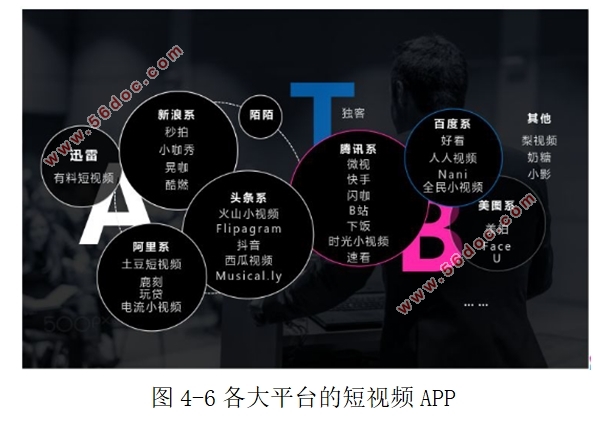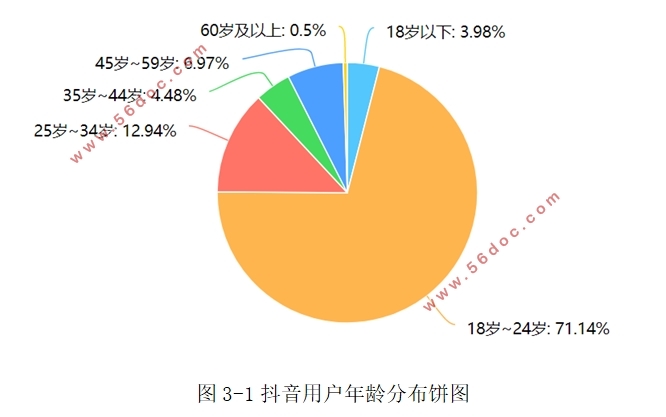社交短视频APP的模式研究—以抖音为例
来源:56doc.com 资料编号:5D26326 资料等级:★★★★★ %E8%B5%84%E6%96%99%E7%BC%96%E5%8F%B7%EF%BC%9A5D26326
资料以网页介绍的为准,下载后不会有水印.资料仅供学习参考之用. 密 保 惠 帮助
资料介绍
社交短视频APP的模式研究—以抖音为例(任务书,开题报告,论文16000字)
摘要
在社交软件不断更新换代,国家出台政策降低流量资费的时代背景下,社交短视频APP应运而生,并且火遍了大江南北。本文着重研究社交短视频APP中的领头羊---抖音APP,对它问世后的运营情况分析,发现问题并提出可行性对策,期望它能在社交短视频APP的激烈竞争中长立不衰之地。
本文首先阐述了目前短视频行业目前的发展背景,概述社交短视频的特点以及市场上其他类型短视频的模式,然后利用调查问卷的方式进行数据采集,并对数据进行汇总分析,对抖音APP存在的问题有一个直观的认识,结合数据反映的情况挖掘抖音APP在技术、营销、用户使用等方面的缺陷,最后联系实际,并结合前人研究的相关成果,对现有问题提出解决对策。
关键词:社交短视频APP抖音模式
Research on App Model of Social Short Video--- Take Douyin as an example
ABSTRACT
The update of social software, traffic reduction, social videothe river line. in this article, the research of the program -- and the social analysis of the program operation, and to find the problems, countermeasures, hope it can buy fierce competition the short video programs.
In this article, the first is a summary of the development of the industry in the background. the short video and other market short video mode, and data collection and analysis through the questionnaire investigation, have problems with visual program mining application is out. and sales and marketing. the data reflect the coupling situation. finally, some suggestion is put forward. according to the actual situation, through the relevant experience.
Keywords:Socialcontact;Shortvideo ;Douyin APP


目录
摘要 I
ABSTRACT II
目录 III
第一章绪论 1
1.1选题背景与意义 1
1.1.1选题背景 1
1.1.2研究意义 1
1.2研究内容与方法 1
1.2.1研究内容 1
1.2.2研究方法 2
第二章文献综述 3
2.1社交短视频APP概况 3
2.1.1社交短视频APP概念 3
2.1.2社交短视频APP内容特点 3
2.2 不同类型短视频模式 4
2.2.1社交类短视频 4
2.2.2功能类短视频 4
2.2.3资讯类短视频 4
2.3文献综合评述 5
第三章问卷调查 6
3.1调查目的 6
3.2问卷设计 6
3.3问卷发放与回收 7
3.4数据分析 7
3.4.1用户群体 7
3.4.2用户使用习惯 7
3.4.3用户使用感受 9
3.4.4用户意见 10
3.5调查小结 12
第四章抖音APP模式分析 13
4.1内容模式 13
4.1.1.UGC与PGC相结合 13
4.1.2.去中心化 13
4.2技术模式 13
4.2.1.协同过滤算法 13
4.2.2.基于流量池的分发推荐 14
4.3营销模式 14
4.3.1.场景营销 14
4.3.2.情感营销 15
4.3.3.明星营销 15
4.4盈利模式 15
4.4.1.广告投放 15
4.4.2.电商模式 16
4.5本章小结 16
第五章抖音APP模式存在的问题及解决策略 17
5.1存在的问题 17
5.1.1内容方面 17
5.1.2用户使用方面 18
5.1.3运营方面 21
5.1.4平台方面 22
5.2解决策略 23
5.2.1内容方面 23
5.2.2用户使用方面 23
5.2.3运营方面 24
5.2.4平台方面 25
结束语 26
参考文献 27
致谢 29
|





